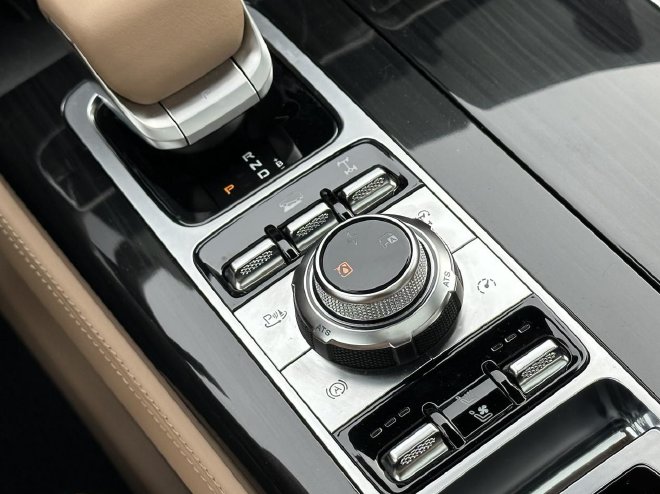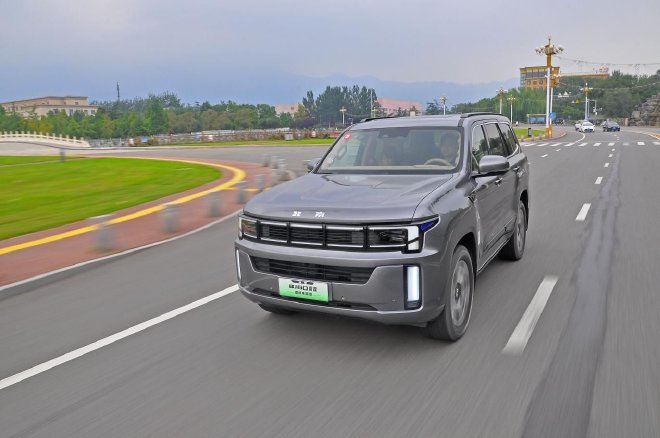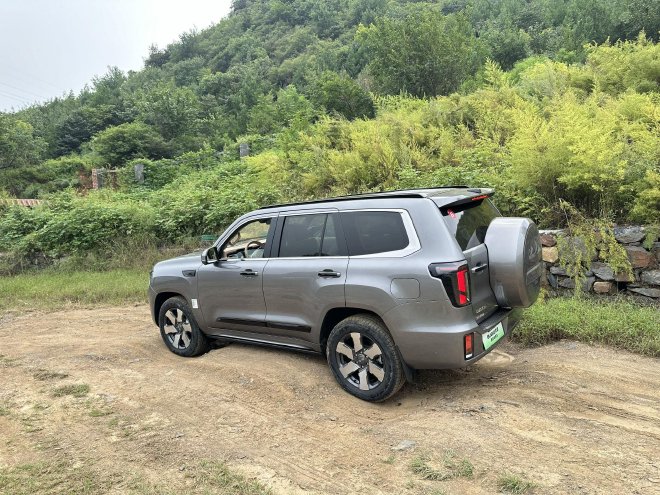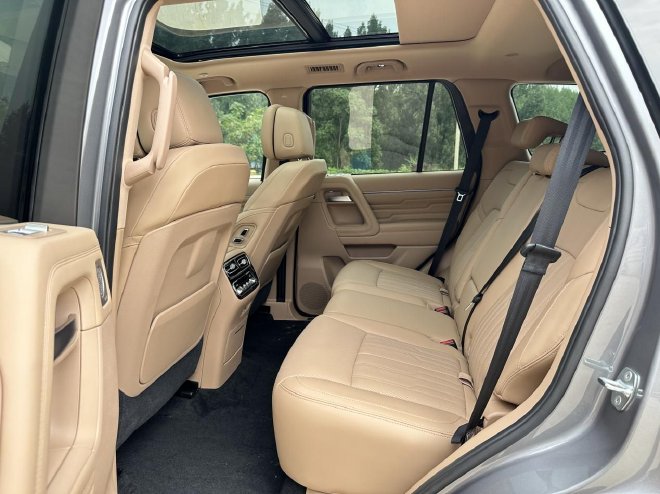Today’s SUVs are completely different from before. Old SUVs focused on one thing—fun! The latest models prioritize family needs first, then consider fun. Take the newly launched Beijing BJ60 Thunder, for example.
The name reveals it. The new car embraces new energy. The BJ60 Thunder features a range extender power system. The range extender is a 1.5T engine with a maximum power of 138kW. The dual motors can deliver a maximum power of 548 horsepower and a torque of 655N·m. The main goal of embracing new energy is to improve performance and fuel efficiency. Off-road vehicles are meant for adventure, but most users face urban driving. This range extender system does not disappoint. It accelerates from 0 to 100 km/h in just 5.8 seconds. The fuel consumption is only 8.75L per 100 km when not charged.
Many friends wonder if the BJ60 Thunder can still be considered a rugged off-roader with its new energy features. Yes, it still uses a body-on-frame design. The rugged foundation remains unchanged. Notably, the BJ60 Thunder combines a body-on-frame structure with independent rear suspension, a rare setup in today’s market. Typically, body-on-frame vehicles use solid rear axles, a common choice for rugged off-roaders. However, to accommodate the rear motor, the BJ60 Thunder innovatively pairs its body-on-frame design with independent suspension. While this setup may not be as hardcore as traditional solid axles, it offers better comfort. Additionally, BAIC claims they significantly enhanced the strength of the lower control arm materials to accommodate the increased weight of the BJ60 Thunder.
The ATS system developed by BAIC will be equipped for off-road use. This system offers 11 modes across three categories. It selects the appropriate mode based on road conditions. This improves fuel efficiency, traction, and driving experience. Drivers can switch modes easily using a knob. The operation is simple and intuitive, with animations showing the changes clearly. The new car features a decoupled four-wheel drive system powered by front and rear motors. It may struggle slightly more in tough situations compared to non-decoupled systems. However, the BJ60 Thunder has a rear lock that enhances its off-road capability.
Let’s talk about the driving experience. First, consider the city pavement. The 0-60 mph acceleration takes about 5 seconds. You won’t worry about that. The turning radius is just 5.5 meters. It feels very nimble. However, the suspension leans towards softness for off-road capability. The travel is also longer. On good roads or at high speeds, the body feels a bit floaty. The suspension support during turns is average.
The NVH is much better than expected. The BJ60 has a large frontal area. We thought its NVH performance would be average. However, at speeds over 90 km/h, noise becomes noticeable. At low speeds, the noise suppression works well.
The brake and steering damping have three adjustable levels. Most consumers can find a suitable style. The energy recovery also has three adjustable levels. The BJ60 Thunder features a single-pedal mode. Overall, the power performance receives praise in urban conditions. However, the suspension performance lags behind.
Let’s look at the off-road performance. First, here are the relevant specs. The minimum ground clearance is 215mm. The approach angle is 30 degrees. The departure angle is 24 degrees. The breakover angle is 23 degrees. The maximum wading depth is 800mm. These numbers are impressive. On muddy roads, through water, and over potholes, the BJ60 Thunder performs effortlessly.
We experienced the BJ60 Thunder on an off-road journey. We climbed steep hills and descended them. We crossed rocky paths and navigated through grass-covered terrain. The new vehicle handled all these conditions with ease. Most consumers will find its off-road capability sufficient.
Honestly, I didn’t expect the BJ60 Thunder to perform so well off-road. The decoupled four-wheel drive lacks the advantage of a mechanical center lock. However, the ATS all-terrain feedback system and the rear differential lock boost the BJ60 Thunder’s confidence on unpaved roads. Sure, it can’t match non-decoupled four-wheel drives in extreme off-roading. But very few users need that level of capability. Personally, I prefer the decoupled four-wheel drive. It offers decent off-road ability and lower fuel consumption. Static Review The BJ60 Thunder retains the design language of the fuel version. It redesigns the grille and fog light area for a younger look. The headlights now feature a blue corner light.
The rear shows little change. The lights and lower bumper have new designs. The design direction mirrors the front. It reduces the luxury feel of the fuel version. The visual effect appears younger and simpler.
The BJ60 Thunder measures 5040mm in length, 1955mm in width, and 1925mm in height. Its wheelbase is 2820mm. Compared to the competitor, the Fangcheng Leopard 5, the BJ60 is taller and larger. It has a stronger presence.
The interior features a large dual-screen instead of a single screen from the fuel version. We experienced the infotainment system. It runs smoother than the BJ40. Two aspects stand out. First, the car uses extensive leather wrapping, creating a strong sense of luxury. Second, the seat comfort is exceptional. The shape, feel, and size are all excellent.
The 2820mm wheelbase provides spacious rear seating. The rear seats feature independent air conditioning. They also offer ventilation, heating, and massage functions. The only drawback is the rear seat backrest angle. A larger angle would improve comfort. Given the available space, this change is feasible.
The trunk performs exceptionally well. It features a flat floor at 0° and a length of 1875mm, creating a spacious 1836L area. The BJ60 Thunder supports 2.2kW external discharge and 3.5kW V2L discharge. It also has a three-level adjustable parking generator with a maximum power of 15kW. This setup provides stable power anytime, making it a boon for camping enthusiasts. In summary, the BJ60 Thunder is a very versatile model. After a day of experience, it scores 60 in urban dynamics, 80 in off-road performance, and 80 in fuel efficiency. You can easily find competitors in each category. However, combined, it currently has no rivals. Compared to the Fangcheng Leopard 5, it offers more space and comfort. Compared to the Tank 500 Hi4-T, it has a significant price advantage. So, would you choose the BJ60 Thunder for both city and off-road use?















